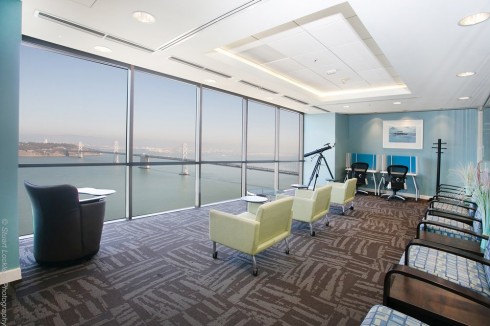The trend reported here compounds the general reduction in office space per worker we have reported on numerous times here, including several letters sent to Board Chairman Sharon Bulova. Still, the County insists on planning office development at 300 gross square feet per worker, about double where the office market is headed. The longer term impact of this decision is that key employment centers, such as Tysons and Reston, could end up with twice as many workers as planned, crippling the ability to handle the needed transportation infrastructure of any type.According to Corenet Global, the average space per office worker dropped 75 square feet in 3 years, boosting the role of temporary office providers.
Temporary office providers aide in corporate downsizing
Office space demand is influenced by shifts in corporate culture and advances in technology. Tenants with expiring leases are downsizing, especially among users that occupy 50,000 square feet or more; average footprints have shrunk by 24 percent from 2003 to 2013[1]. Tenants are trying to become more productive with space by increasing utilization rates in order to minimize occupancy costs and increase collaboration between employees and departments. According to a survey conducted by Corenet Global, the average amount of space per office worker globally dropped to 150 square feet or less in 2013, from 225 in 2010. (Reston 2020 note: These figures apply to rentable space. Fairfax County tracks gross square footage for development planning purposes, which runs about one-third higher.) One of the primary approaches to accomplishing this is to increase the percentage of workers that share space. Cloud-based systems and online data warehouses have enabled employees to work from any location, facilitating this effort.
Companies have called upon temporary space providers in order to manage the risk of overflow and handle temporary excess demand, which has resulted in tremendous growth in this arena. Two of the largest have flourished recently: Regus’ operating revenue in 2013 increased 24% from the prior year to £1.534 billion[2], while Servcorp’s operating revenue increased 16% from the prior year to $242 million[3]. This growth is not limited to the public sector. Irvine, CA-based Premier Business Centers, the United States’ largest privately owned executive suite and alternative workspace company, was selected by Inc. Magazine as a Top Growth company in March 2014 and has grown from 900,000 square feet to over 1.3M, increasing their number of locations by 26% in the last few years[4]. Additionally, Preferred Office Network, the largest network of independent office business center operators aimed at corporate users, has increased their number of locations by 79% in less than four years.
The temporary space model works best in major markets since organizations need flexibility in areas that neighbor their existing locations. Well-located office buildings are able to maintain higher occupancy with these master lease-type tenants. Although sub-tenants pay a premium, the ability to grow and shrink quickly in space that is fully built-out makes this a compelling secondary option. One executive at Regus, the world’s largest temporary space provider, stated that about half of Fortune 500 companies use Regus in some capacity, including Google, Accenture and Apple[5]. I believe the growth of temporary office space providers will continue as more firms become focused on decreasing office space per worker and shift to a higher percentage of shared working space. Companies will want to push the limits and test new layouts to achieve higher utilization rates, understanding that they have a temporary space provider next door if things go awry.
In the near term, the impact is to have high and rising vacancy rates in the area's office market. Transwestern reports the following NoVa office performance for 2014:
Most noteworthy is the NEGATIVE 2014 net absorption (more space vacated than leased) that has led to the highest office space vacancy rates seen in nearly two decades--and this has been the case for several years. That means less property tax revenues from these property owners--and a greater reliance on home property values (which have grown modestly) to serve as the basis of County tax revenues. Yes, our property taxes will rise even in this local election year.


No comments:
Post a Comment
Your comments are welcome and encouraged as long as they are relevant, constructive, and decent.